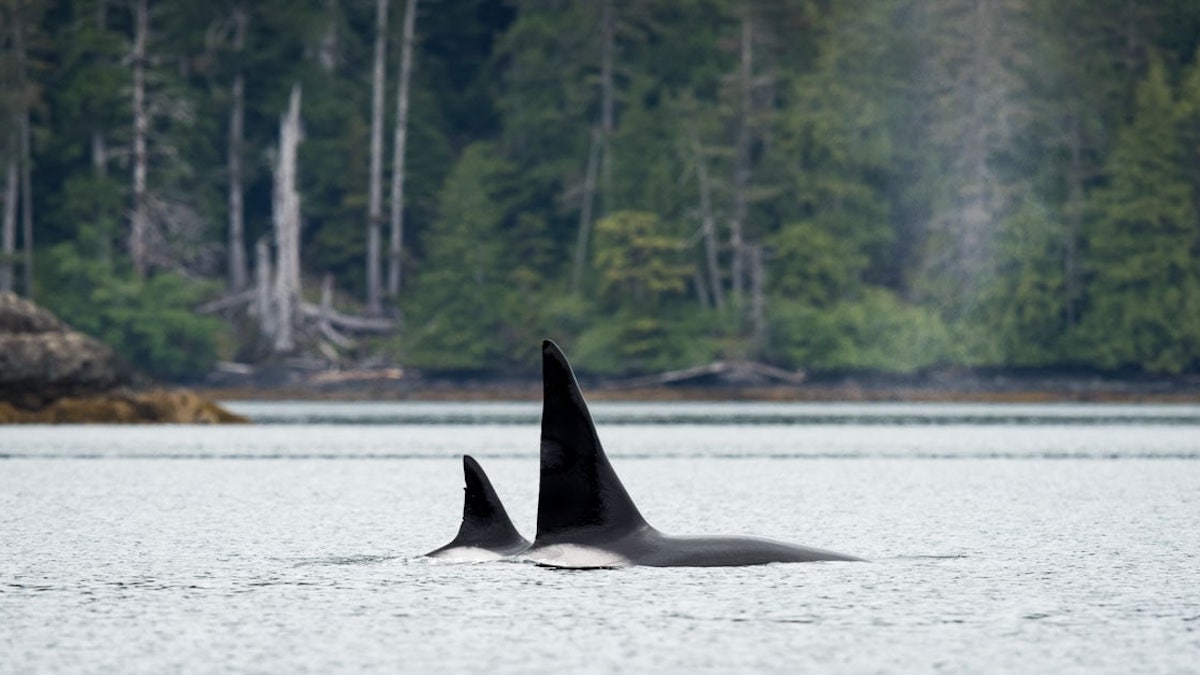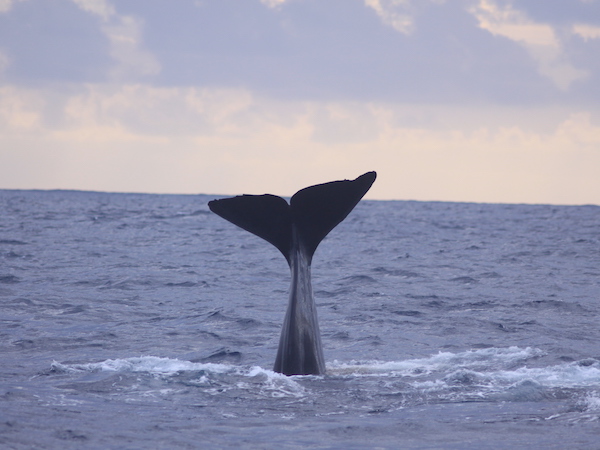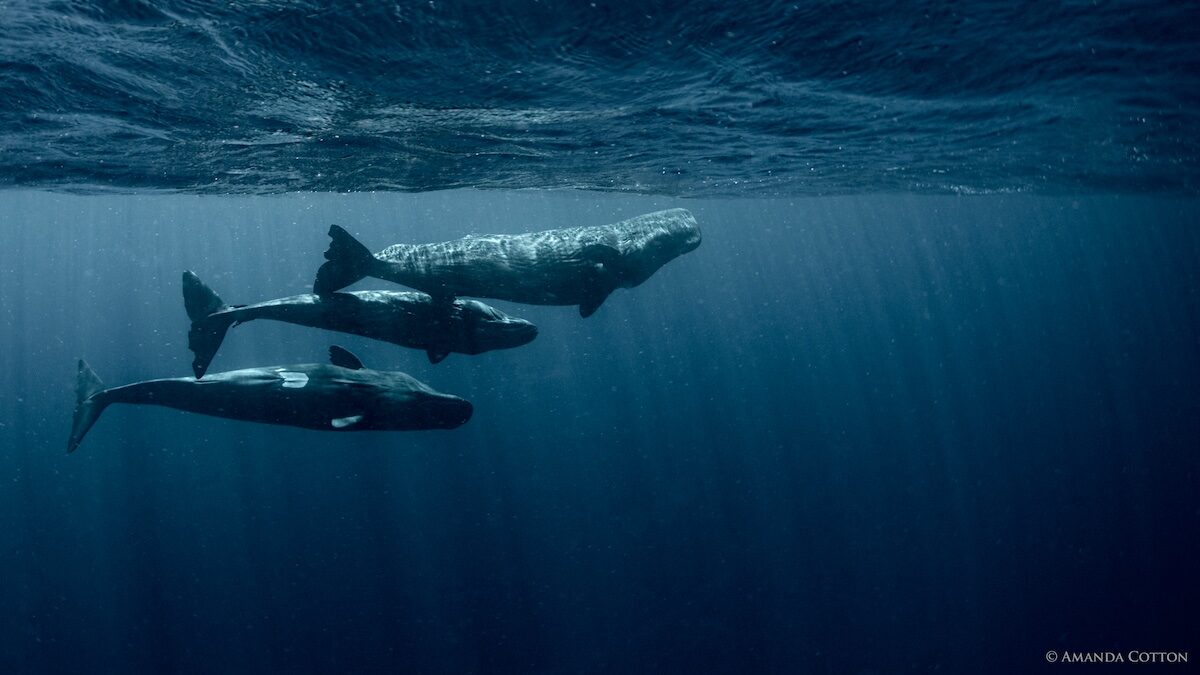Off the coast of the Galapagos Islands, a 40-foot sailboat is on a mission. In tow, it carries a hydrophone, or underwater microphone. Its passengers hope to capture a sound that most people will go their whole lives without encountering directly in nature.
This is a series of clicks, similar to morse code, that echoes through the ocean. For the past seven years, hydrophones have been collecting these clicking patterns, also known as “codas,” across the Pacific Ocean, to piece together an overflowing dataset of sperm whale dialects.
From hundreds of hours of audio, evidence of cultural identities in sperm whale clans has emerged and has prompted a new study co-authored by Shane Gero, a scientist-in-residence at Carleton University.
This is the first of several publications, Gero said, that will contribute to the larger Global Coda Dialect Project he’s working on alongside 23 collaborators from around the world.
Within the scope of this project, similar analyses of sperm whale dialects in the Indian and Atlantic Oceans are also being undertaken to complement the recent comprehensive look at the Pacific clans.

This is something, Gero said, that simply would not be possible without all hands on deck.
“Half of the labour of this (study) wasn’t necessarily innovative analysis,” he said. “It was the bringing together of all the people who study sperm whales across the Pacific, 23 different sites thousands of kilometres apart.
“No one lab at one university would ever be able to do that,” he added.
What originally began as a thesis chapter by co-author Taylor Hersh has become something Hersh says is much larger than she initially anticipated.
“In some ways, it’s one of those papers where pieces of it were almost accidental,” she said. “We’ve had these kinds of questions for a while, but it was only as we started looking at this huge, unprecedented data set more that we realized it could potentially be used to answer them.”
Dialects differ between social units and clans
By piecing together hours of recordings, Hersh said it became evident that the whales’ use of codas is heightened while socializing — proving that they’re used as a form of social communication.
Whales that use similar coda “dialects” belong to a social unit, Hersh explained, often made up of mothers, their daughters and other whales.
“Social units that have similar dialects . . . will associate. So they will spend time at the surface together, and they’ll go off and forage but come back together,” Hersh said.
While these dialects resemble the language-driven culture of humans, codas are not the same as human words or names, Hersh said. There just simply aren’t enough distinct codas for every individual whale to have its own.
“[There are fewer] than 10 codas that each clan really uses distinctly,” she said. “But then there are also codas that we call non-identity codas, which are ones that whales from different clans will both make.”

Orcas join the conversation
Sperm whales aren’t the only creatures of the sea cultivating their own culture through dialects. Killer whales also have a repertoire of call types, according to Volker Deecke, an associate professor in wildlife conservation at the University of Cumbria.
Mothers are very important in killer whale clans, Deecke explained. Northern Resident killer whales in British Columbia and southeastern Alaska, for example, include about 250 whales divided into groups by maternal relatives. This means that an old female whale, her offspring, and her female offsprings’ offspring will travel together as one group.
“As long as the mother is alive, her offspring are travelling with her, even if they’re males in their 40s or females with their own offspring, they’re still almost 100 per cent associated with the mother,” Deecke said.
The similarities with sperm whales stem from the fact that these maternal groups share certain call types, much like sperm whale codas. Each group of killer whales will have a repertoire of about 15 call types, Deecke said. Some of these will be shared with other maternal groups and some will be unique to them.
This differentiation in calls comes in handy during mating, according to Deecke.
“Females seem to choose a mating partner from a different acoustic clan and … that could well be an outbreeding mechanism,” he said. “By choosing a male that sounds very different, they avoid at least meeting with close maternal relatives.”
When a new calf is born into a maternal group, Deecke said the usage of the few call types that are unique to that group heightens.
“They’re trying to indoctrinate, so to speak, the young calf, ‘this is your family badge and if you get lost, listen for this call,’” Deecke said. “[These are] very interesting parallels to human communication.”
In the name of conservation
In recent years, according to Hersh, the desire to incorporate animal culture into conservation efforts has become more pronounced.
“If the whales see themselves as distinct groups, that suggests that we should, too, if we want to make sure that each group survives and is around in the oceans for future generations to learn about and enjoy,” Hersh said.
“(These are) very interesting parallels to human communication.”
— Volker Deecke, associate professor of wildlife conservation, University of Cumbria
Humans recognize vast cultural differences between a person from New York and a person from Nairobi, Gero said, and so do sperm whales between units and clans.
However, Gero said the current emphasis on species population numbers and genetic diversity in conservation, such as classification on the International Union for Conservation of Nature endangered species list, leaves out sperm whale culture.
“If these animals are structuring their populations so strongly along these cultural lines and these cultures are what makes them survive, then … this provides the basis to restructure large scale conservation policy,” Gero said.

Through presenting the evidence of this human-like trait in sperm whales, Gero said he hopes public support for animal conservation can improve.
“People really engage with the fact that animals have a concept of ethnic background and that’s a powerful tool for swaying people’s opinion for the conservation of nature,” he said.
In the future, Hersh said she thinks it’s abundantly clear that culture and cultural processes of sperm whales need to be incorporated into conservation efforts and policies.
“If a population of sperm whales is increasing in an area, it’s really important to consider how many cultural groups there are. Are they all increasing? Or is just one increasing?” she said.
This is especially important, Hersh said, as climate change forces sperm whales to adapt to changing habitat. She added if one clan or social unit is adapting better than another because it has a different foraging strategy, for example, conservationists should be able to identify this and use it to help the species as a whole.
This is, absolutely, the greater goal behind studies like this, Gero said.
“We need to change the way, (from) a policy framework standpoint, we define what is the important part of biodiversity,” Gero said. “And culture needs to be a part of that.”




